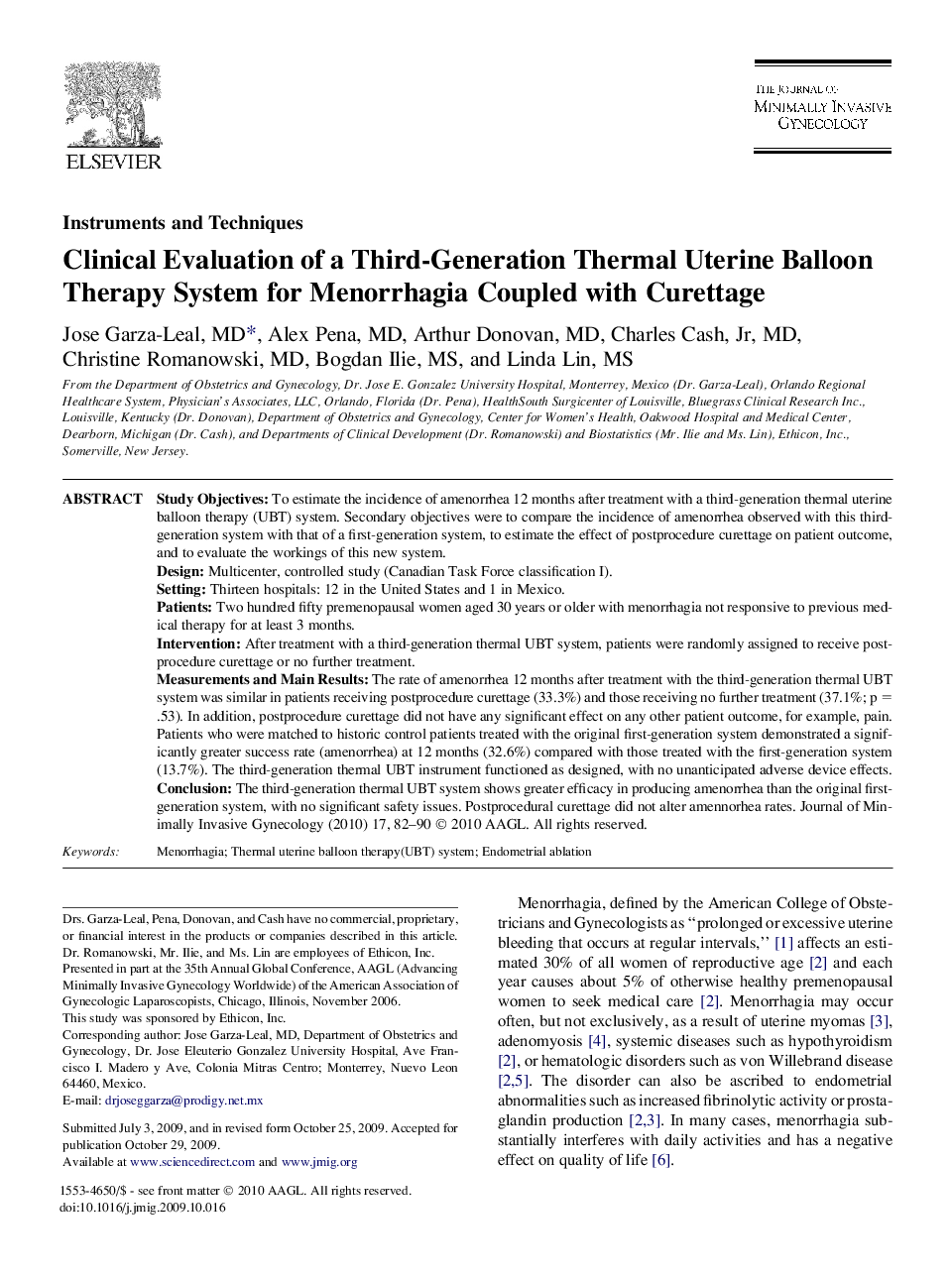| Article ID | Journal | Published Year | Pages | File Type |
|---|---|---|---|---|
| 3956853 | Journal of Minimally Invasive Gynecology | 2010 | 9 Pages |
Study ObjectivesTo estimate the incidence of amenorrhea 12 months after treatment with a third-generation thermal uterine balloon therapy (UBT) system. Secondary objectives were to compare the incidence of amenorrhea observed with this third-generation system with that of a first-generation system, to estimate the effect of postprocedure curettage on patient outcome, and to evaluate the workings of this new system.DesignMulticenter, controlled study (Canadian Task Force classification I).SettingThirteen hospitals: 12 in the United States and 1 in Mexico.PatientsTwo hundred fifty premenopausal women aged 30 years or older with menorrhagia not responsive to previous medical therapy for at least 3 months.InterventionAfter treatment with a third-generation thermal UBT system, patients were randomly assigned to receive postprocedure curettage or no further treatment.Measurements and Main ResultsThe rate of amenorrhea 12 months after treatment with the third-generation thermal UBT system was similar in patients receiving postprocedure curettage (33.3%) and those receiving no further treatment (37.1%; p = .53). In addition, postprocedure curettage did not have any significant effect on any other patient outcome, for example, pain. Patients who were matched to historic control patients treated with the original first-generation system demonstrated a significantly greater success rate (amenorrhea) at 12 months (32.6%) compared with those treated with the first-generation system (13.7%). The third-generation thermal UBT instrument functioned as designed, with no unanticipated adverse device effects.ConclusionThe third-generation thermal UBT system shows greater efficacy in producing amenorrhea than the original first-generation system, with no significant safety issues. Postprocedural curettage did not alter amennorhea rates.
